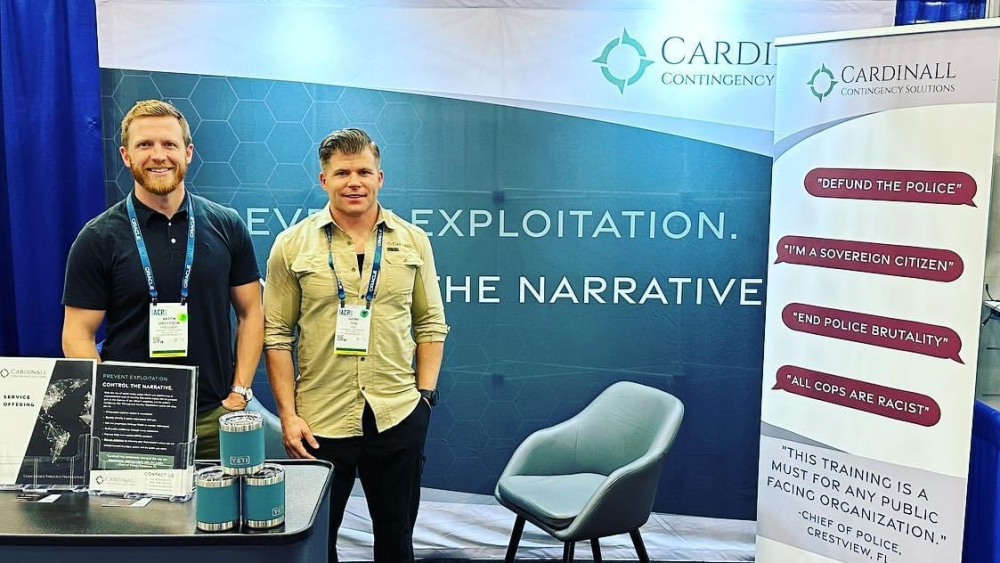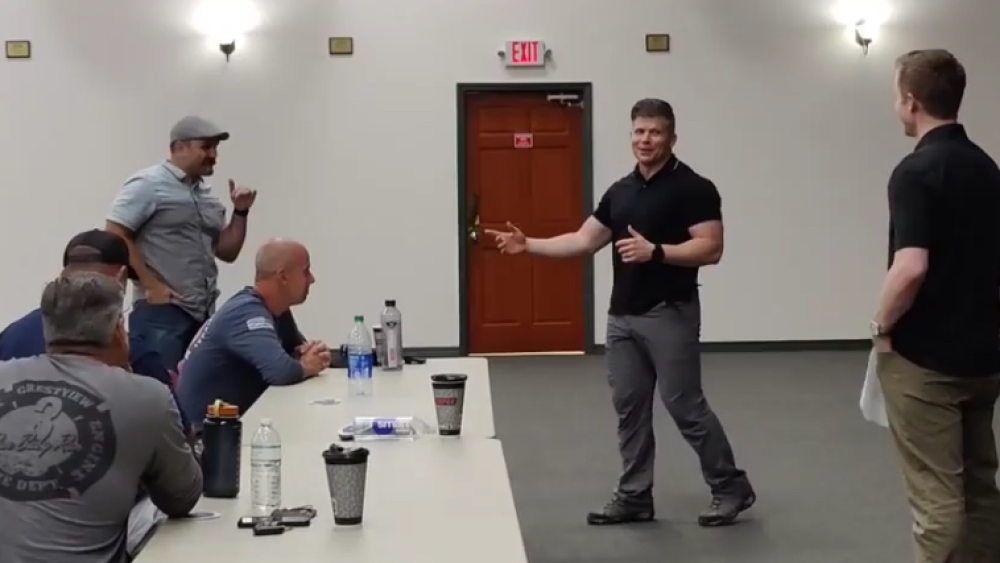Things are no longer quite as hostile on the streets as they were for American law enforcement in 2020, but that doesn’t mean officers’ days are free of confrontation. In recent years, with the rise of social media that rewards viral video content (e.g., YouTube, Instagram, TikTok), new types of agitators have emerged, with new attempts to provoke and record conflicts with unprepared cops just trying to do their jobs.
These community members come in a few common flavors. They can include self-styled “first amendment auditors,” who are generally advocates for government transparency who test their abilities to video-record community leaders and locations; “second amendment auditors,” gun-rights enthusiasts who test their ability to open-carry firearms; and even “sovereign citizens,” who believe courts, taxing entities and motor-vehicle departments lack authority over their lives. Racial justice, police abolition and other issue-driven activists are still around as well – and typically armed with video.
They can have all sorts of motivations, but what often unites these citizens is a desire to fluster police on camera and badger them into saying something embarrassing or attempting to restrict some protected activity. Officers who slip up in the face of this well-practiced rhetorical gamesmanship can bring controversy to their departments and harm to their careers.
“You see these videos all over YouTube where people are trying to play ‘gotcha’ games with law enforcement and undermine its credibility,” said Dayne Tosi, an Air Force veteran and SERE (survival, evasion, resistance and escape) specialist who’s now CEO of Cardinall Contingency Solutions, which offers law enforcement training, crisis communication training and travel risk management for clients nationwide. “You feel bad for these officers, but they’re not going to win a fight if they’re on defense the whole time. And that’s where these officers can find themselves: just backpedaling, desperately trying not to make a mistake.”
It’s a problem for which Cardinall has developed a solution: Its Tactical Communicator Course teaches the skills needed to parry and redirect these adversaries and, more broadly, “exploiters” of all types, from hostile interlocutors on the streets to skeptical reporters at press conferences.
MAKE EVERY ROAD A DEAD END
The Tactical Communicator Course helps officers understand the motivations and tactics of all these individuals, identify and counter their attempts, and support their departments’ desired messaging both verbally and nonverbally. The skills they receive reflect some key tenets of crisis communications, but rather than persuasion, the goal is to maintain an impenetrable composure and professionalism that frustrates opponents’ arguing and probing by not giving them the damning sound bites they want.
“You need to have a direction and talking points, and you need to be able to identify a pathway and successfully transition into those talking points every time,” said Tosi. “Really what you’re trying to do is break the will of the exploiter, rather than win them over with your intellect and communication skills.
“I’m not trying to convince this person that they should see it my way. What I’m trying to do is subtly, politely and professionally convince them that for what they’re here to get – which is propaganda for the purposes of exploitation – I’m a dead end. And if I’m a dead end, and my partner’s a dead end, and every one of the front-facing law enforcement officers on the street is a dead end, eventually the department becomes a dead end. So the goal is to have this unified approach where we just break the will of these antagonistic exploiters altogether.”
Experience with the military’s SERE training gave Tosi and Cardinall President Aaron Anderson some key background that prepared them to assist law enforcement with counterexploitation training. The SERE program dates to the end of World War II, but after the Korean War, military leaders expanded its primary focus from simply surviving a crash to avoiding subsequent capture and resisting interrogation. The military code of conduct was expanded to cover such situations, and in the ’80s levels were created to stratify SERE training. Level C training, for those at high risk of capture and whose position could make them vulnerable to enhanced exploitation attempts, emphasizes resistance to exploitation and interrogation, as well as survival and escape.
“For everybody that conducts high-risk operations, SERE teaches them what to do if things go really sideways,” said Anderson. “This includes communicating and presenting a beneficial image in the most dire circumstances. What we offer law enforcement is an adjacent skill set that is relevant to the problems they face on a daily basis.”
A COURSE IS CREATED
The idea of training law enforcement hadn’t yet fully formed when Tosi first linked up with city leaders in his home city of Crestview, Florida. Local police needed some counterexploitation help, and the city manager knew Tosi’s background. He met with Chief Stephen McCosker, and Cardinall subsequently put together a prototype of their course and delivered it to Crestview officers. “We had to formulate how we could convert what we provided in the military to something applicable to law enforcement and their problem set,” Tosi recalled.
The challenges Crestview PD faced were familiar but vexing: “We definitely have a couple of sovereign citizens we deal with on a regular basis,” said McCosker, a law enforcement veteran of more than 30 years. “We have one guy who just likes to stand in weird places and record things, and we have another set who are just generally antipolice no matter what the function or action is.” On occasion these attention-seeking antagonists had flummoxed officers into verbal missteps.
All Crestview officers took the course. McCosker wanted a few things from it, including some guidance for narrating events for body-worn cameras and an emphasis on the department’s mission and core values.
Both ended up as key components of the Tactical Communicator Course. One of its core skills is the ability to transition hostile dialogues back to those central tenets. Police departments’ value and mission statements are noble and sympathetic to the public, and officers benefit by close association with them.
“Once we got people comfortable with using our core values to explain why we were doing certain actions,” McCosker explained, “they could answer the questions honestly, but at the same time not find themselves in a position where they feel like they have to passively concede to something they don’t agree with. It’s a good way to keep the conversation from becoming argumentative.”
“The counterexploitation tactics are the defense, and the messaging piece is the offense,” added Anderson. “It gives officers a target to drive interactions to, allowing them to take more control. We teach our students to transition from our counterexploitation techniques to their departments’ core values, then on to their motto or mission statement. This is something officers can do to help positively impact the larger narrative.”
It also has the additional benefit of bringing those sometimes-dry organizational statements – often just seen as words on paper – to life as officers embrace and articulate them every day.
Body-cam narration is a defensive skill aimed at providing a fuller picture to anyone who might later view recorded events. As an example, say a suspect being placed in a car for transport subtly tenses up as if planning to resist. That might not be visible on the officer’s BWC but is a legitimate reason for further restraint. Speaking that into a contemporaneous record justifies an action that might otherwise look punitive or unnecessary.
The course also covers areas like body language and can include roleplay where instructors depict the kinds of aggravating interactions that can entrap the unprepared. As a learning aid, Cardinall created a pocket-size tool that helps users learn how to easily connect their messaging techniques to organizational values in various scenarios.
In Crestview the course went so well that other public-facing city employees took it too. “These guys were taking a bunch of notes,” McCosker said afterward. “I’ve been doing this job for over 30 years, and I’ve never seen a police officer take notes in a class!” The chief heard immediately that the information would have helped officers in some key situations and says he’s been seeing the desired messaging and redirecting consistently in BWC reviews since.
MILITARY FOCUS BENEFITS MESSAGING
While cops on the street need soft skills, they are not trained strategic communicators – but they do, in fact, have positive and important messages to impart. Bringing more of a disciplined military focus to that challenge can help shield officers from interactions that go off the rails and impact careers.
“It’s not just about avoiding being exploited – you actually do have a job to do and a narrative you want to get out there,” Tosi noted. “You want to build public trust and confidence. What that takes is both defensive and offensive approaches. Defensively, you want to be able to identify and avoid falling into the traps of exploitation. Offensively, you want to message your values and continually promote the proper narrative for your department and community.”
Cardinall Contingency Solutions’ Tactical Communicator Course is customizable to department needs and available anywhere in the U.S.
For more information, visit Cardinall Contingency Solutions.





